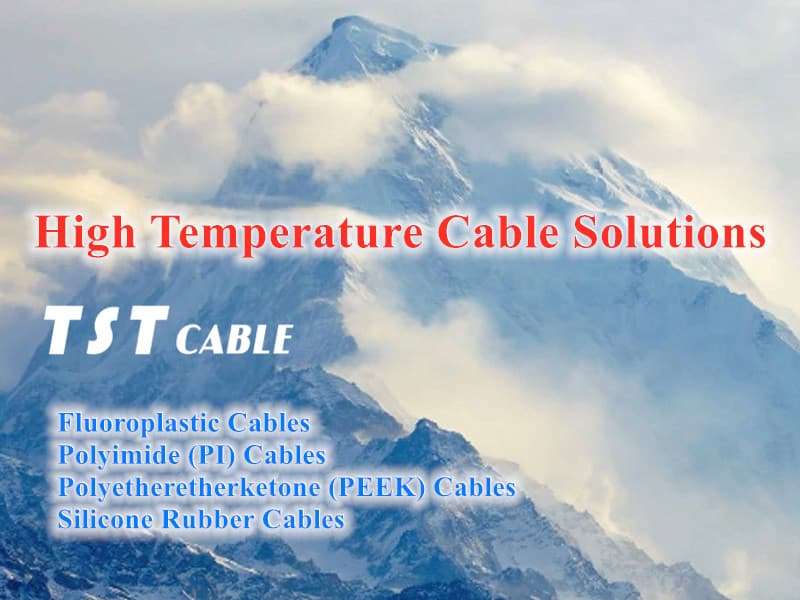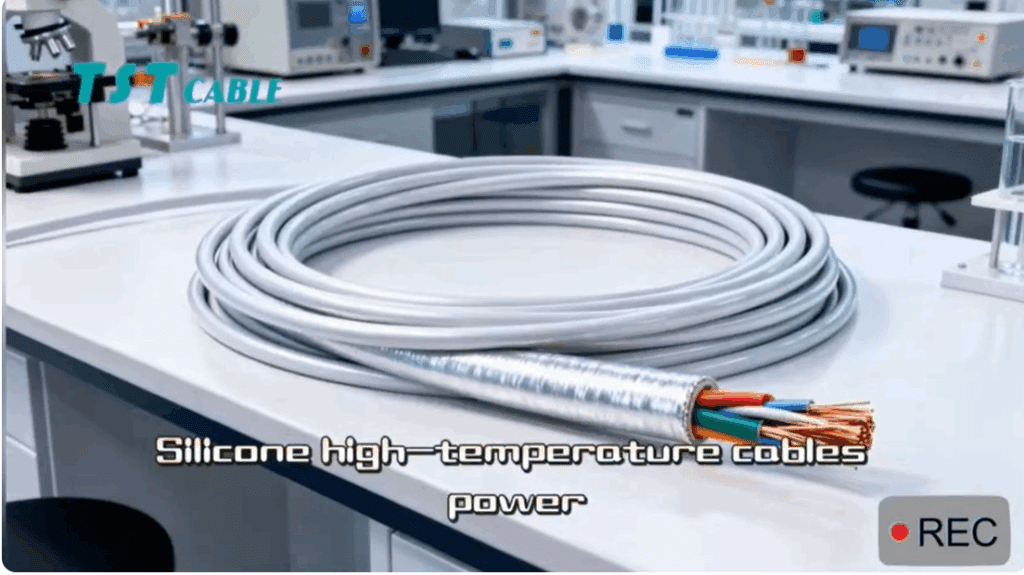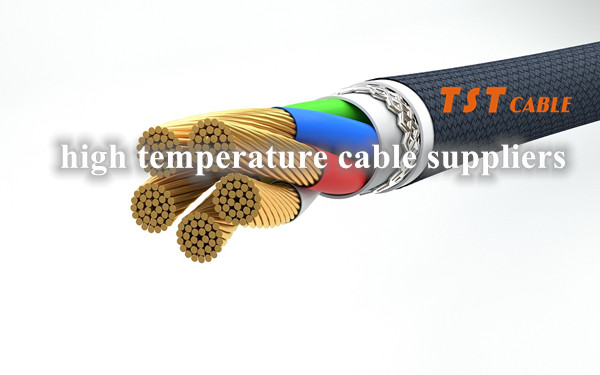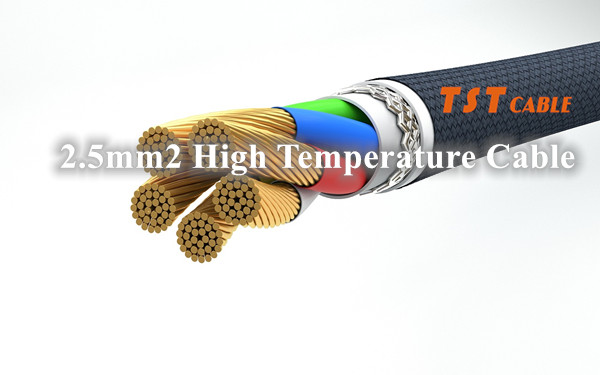
National standard, American Standard, the European standard cable temperature rating differences are mainly reflected in the respective standard system of cable material performance, testing methods and safety requirements on the differences. Below TST CABLES briefly describes each of these three standard systems for cable temperature resistance ratings:
National standard cable (China’s national standard)
China’s cable temperature rating follow the GB (GB) series of standards, such as GB / T 5023, GB / T 12706, etc.. The temperature resistance of cables is clearly categorized in the GB, usually based on the long-term working temperature of the insulation material. For example, the long-term working temperature of ordinary PVC insulated cables generally does not exceed 70°C, while cross-linked polyethylene (XLPE) insulated cables can reach 90°C or even higher. The national standard will also specify the temperature resistance requirements under specific conditions (such as short circuit) to ensure the safe operation of the cable under abnormal conditions.
American Standard Cables (UL Standard)
The temperature resistance rating of cables in the United States mainly follows UL (Underwriters Laboratories) standards, such as UL 44, UL 854, etc. In UL standards, the temperature resistance ratings of cables are commonly 60°C, 70°C, 80°C, 90°C, 105°C, 125°C, etc. These ratings are mainly for the insulating materials of cables. For example, the 60°C rating is suitable for general use, while cables above 105°C are used in applications requiring higher temperature resistance, such as motor windings, internal wiring in ovens, etc. UL standards are very stringent in testing cables, including, but not limited to, high-temperature aging tests, thermal shock tests, etc. to ensure that the cables work stably for long periods of time at the specified temperatures.
European standard cable (EN/IEC standard)
European standards are based on EN (European Standard) and IEC (International Electrotechnical Commission) standards, such as EN 50525, IEC 60227 and so on. The temperature resistance level of European standard cables is also based on the heat resistance of the insulating material, commonly 70°C, 90°C, 105°C, etc. EN/IEC standards focus on harmonization with international standards, emphasizing the safety and interchangeability of cables. In terms of temperature resistance, EN standards usually require that the electrical properties of cables remain stable at specific ambient temperatures, and that they have good insulation and mechanical strength at high temperatures.
Differences
Standard system: the national standard reflects the specific needs and actual situation in China, the American Standard emphasizes the strictness of the safety test, and the European standard tends to be internationalized and standardized.
Classification of temperature resistance levels: Although the three standard systems have similar temperature resistance levels, there are slight differences in specific values and applicable scenarios, such as 125°C in the AFSL is more common, while it is relatively rare in the European Standard and the National Standard.
Test Methods and Requirements: The standards differ in test methods, such as the thermal stability of the cable, mechanical properties of the test, etc., the respective standards have detailed provisions to ensure that the cable meets the safety requirements of their respective markets.
Environmental protection and sustainability: In recent years, the standards of various countries are gradually strengthening the requirements of environmental protection and sustainability, such as restricting the use of certain hazardous substances, but the specific degree of restriction and implementation time may vary.
Cable Application and Selection Considerations
In practical applications, the selection of cables that meet the standards depends not only on the legal and regulatory requirements of the project location, but also needs to consider the following aspects:
- Application scenarios: Different use environments have different temperature resistance requirements for cables. For example, high-temperature operating environments such as steel mills and oil refineries may require cables with higher temperature resistance levels; while regular office or residential environments can choose cables with relatively low temperature resistance levels.
- Safety margin: When selecting cables, a certain margin of safety is usually considered. Even if the actual operating temperature is not high, the selection of cables with a higher temperature resistance rating can improve the reliability of the system under abnormal conditions.
- Costs and benefits: Cables with higher temperature resistance ratings tend to cost more, so the initial investment in cables needs to be considered in conjunction with the long-term operational benefits, including maintenance costs, replacement cycles and other factors.
- International compatibility: In the context of globalized trade, some projects may require cables to meet the standards of multiple countries or regions at the same time to ensure the international universality and interchangeability of products.
- Environmental requirements: With the global emphasis on environmental protection, low-smoke halogen-free cables are becoming an increasingly popular choice because they produce less smoke and toxic gases in case of fire. The requirements and definitions of environmentally friendly materials in different standard systems are not the same, and when choosing, you need to pay attention to whether or not it meets the environmental regulations of a particular region.
Cable standards convergence and future development
With economic globalization and trade liberalization, the exchange and convergence between national standards, American standards and European standards are deepening, and many standards are developing in the direction of mutual reference and compatibility. Especially in terms of environmental protection, sustainability, safety performance, etc., the International Organization for Standardization (ISO) and the International Electrotechnical Commission (IEC) and other institutions are promoting the establishment of a broader consensus and unified standards to promote the opening and cooperation of the global market.
At the same time, with the emergence of new materials and technologies, the cable industry is also actively exploring more efficient and environmentally friendly temperature-resistant materials, such as high-temperature superconducting materials, nano-composites, etc. These technological advances will promote the further enhancement of the temperature resistance level of the cable, but also put forward a new challenge and revision of the existing standard system.
Although there are similarities between the National Standard, American Standard and European Standard in terms of temperature resistance level of cables, they have their own focus on specific details, testing requirements and scope of application, reflecting the differentiated needs for cable performance and safety in different regions. Understand and reasonably apply the national standard, the American standard, the European standard in the cable temperature resistance level of the differences between the cable system is essential to ensure the safe, efficient and environmentally friendly operation of the cable system, but also cable technologists and engineers in the design, selection, construction process must be considered a key factor. With the continuous progress of technology and the gradual integration of global standards, the future development of the cable industry will pay more attention to safety, environmental protection and intelligence. If you need to customize high temperature cables(-190°C to 1400°C) of various specifications and standards, please feel free to send an email to TST cables, and you can also apply for free samples.
Also available in:
English





